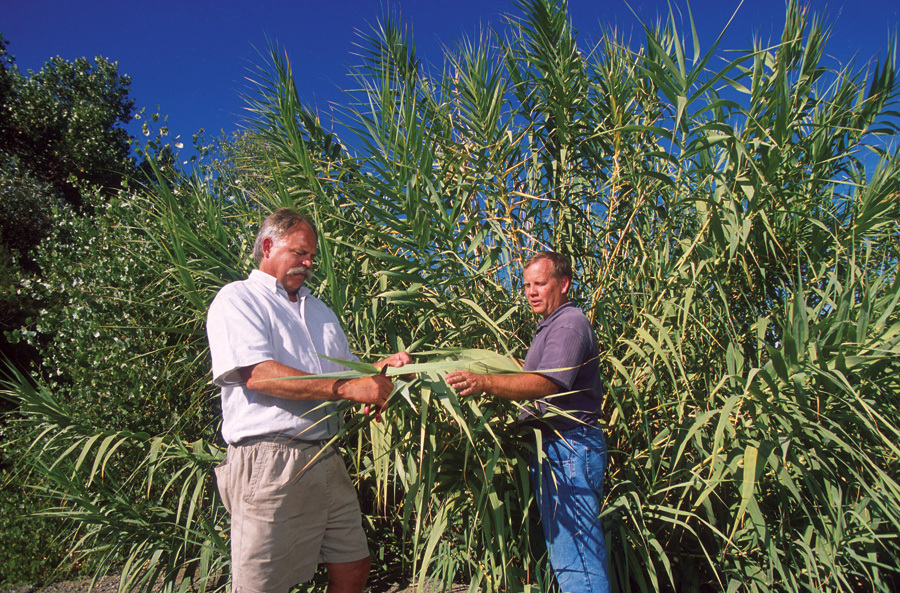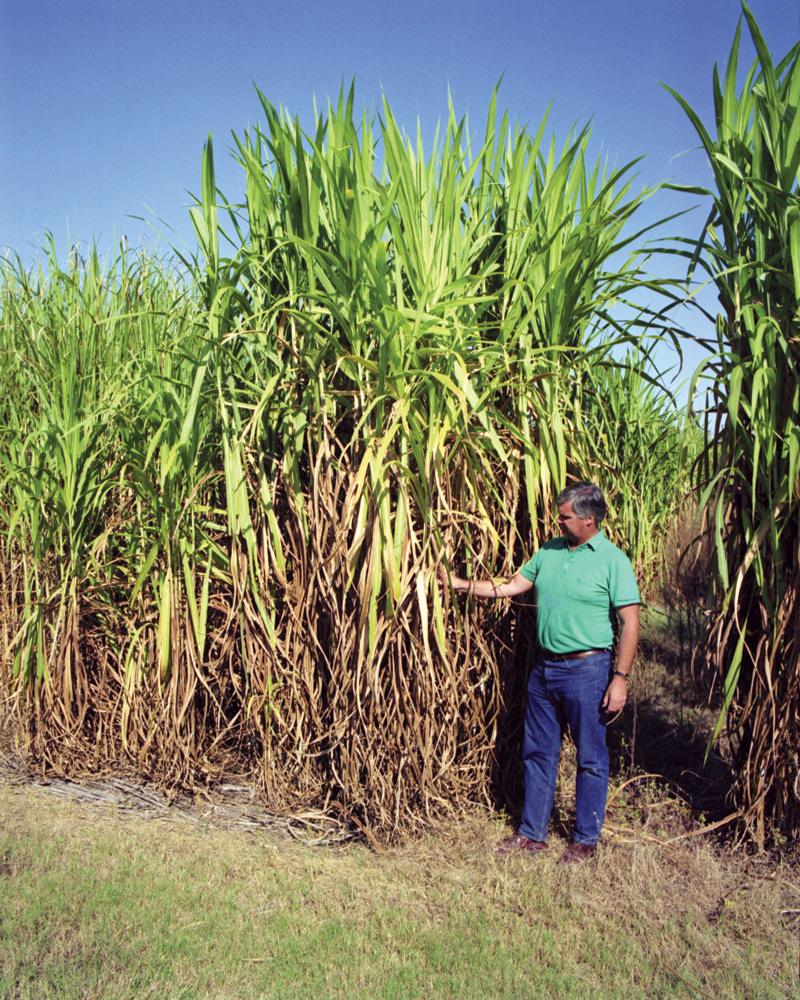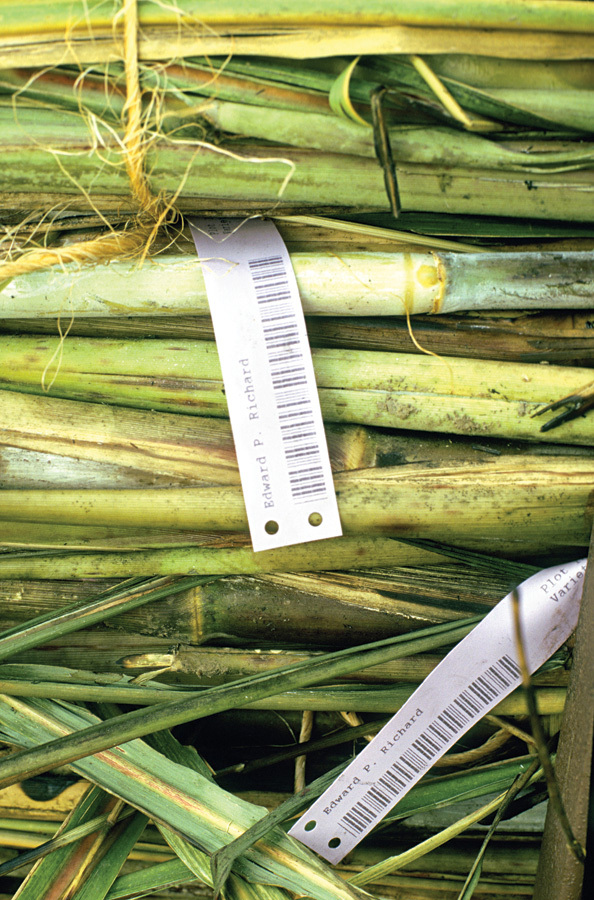Advancing Pathways for Advanced Feedstocks




PHOTO: USDA Agricultural Research Service
April 11, 2012
BY Erin Krueger
The approval of new feedstock pathways under the renewable fuels standard (RFS2) is critical to the developing cellulosic ethanol industry. The addition of new pathways expands the library of biomass crops available for conversion into RFS2 compliant biofuels and using approved feedstocks is the only way producers can generate renewable identification numbers (RINs) for the resulting fuel. The approval of specific feedstock pathways is also critical to financing a project, since investors may be less willing to support a project that relies on an unapproved feedstock.
On Jan. 5, the U.S. EPA issued a direct final rule regarding pathways for three grassy biomass crops—energy cane, giant reed and napiergrass. The agency also published a parallel proposed rule for the pathways on the same day. According to the EPA, it published the direct final rule without a prior proposed rule because it viewed the addition of these new RFS2 pathways as noncontroversial. The EPA explained the new pathway determinations did not require new agricultural sector modeling and involved relatively straightforward analyses that largely relied on work that had already been completed as part of the RFS2 final rulemaking. In the direct final rule, the EPA also noted that the pathways would become effective March 5 unless the agency received adverse comments or a hearing request by Feb. 6. The EPA did receive such comments, and on March 5 published a notice in the Federal Register officially withdrawing the direct final rule.
Several public comments are posted to www.regulations.gov in regard to the direct final rule, some in support of the new pathways, others critical. Robert Bendick, director of U.S. government affairs at the Nature Conservancy, posted a critical comment on behalf of the National Environmental Coalition on Invasive Species. The comment noted that the rule would approve renewable fuel pathways for plant species that are listed as noxious weeds and/or are considered invasive species in the U.S. “EPA has not considered how this rulemaking will affect the introduction or spread of these species, nor has it taken action to avoid or minimize these effects,” Bendick said in the comment.
However, the EPA’s withdrawal of the direct final rule does not mean that the pathways will not be amended to the RFS2. Rather, it will complete the rulemaking process using the parallel proposed rule it published for the pathways. According to the agency, it intends to address all comments in a subsequent final action. The agency also noted that it will not institute a second comment period on the action.
Advertisement
While the pathways for energy cane, giant reed and napiergrass will be delayed, the research community and biofuels industry are continuing the efforts to bring the advanced feedstocks to commercial fruition.
Developing the Crops
The USDA’s Agricultural Research Service is diligently working to improve and develop advanced biofuel feedstocks, including extensive work with napiergrass, energy cane and a wide variety of other bioenergy crops. According to Jeff Steiner, ARS national program leader for Biomass Production Systems, no matter what feedstock an ARS research program focuses on, a primary goal is to reduce inputs while increasing yield. Specifically, ARS researchers work to reduce the use of nitrogen and water. In addition, the research programs also focus on improving the traits of these crops for use by the biorefining industry. “The real twist on the whole thing is to try to design the feedstocks so that they are friendly to specific conversion technologies,” he said.
Regarding the ARS’s work with napiergrass, Steiner notes ARS researchers are looking at a full systems approach to developing napiergrass as a biomass crop. The work, he continues, is led by research geneticist Bill Anderson in Tifton, Ga. “[Anderson] is particularly looking at breeding for higher yield and improved production efficiencies along with genetic components that would enhance the conversion ability of the crop into biofuels,” he says. While the ARS is continuing work to further improve napiergrass, Steiner says there are varieties of the crop that are ready for commercial deployment. “One of those is called Merkeron,” he continues. “That material is actually in pretty good shape.” In dryland conditions, the variety can achieve yields of 8 to 10 dry tons per acre and with some irrigation, the yield can be pushed to 15 dry tons per acre.
The high-yielding, lesser-known napiergrass biomass crop is attracting interest, according to Steiner. “We have cooperative research and development agreements with specific companies that are interested in the materials,” he says. “We are working closely with them. They are helping to set the quality standards for their conversion processes to optimize their systems. We work in that with them, as well as with the general materials to improve yields, reduce input costs and so forth.”
Advertisement
The ARS is also working with energy cane. Gail Wisler, ARS national program leader for horticulture and sugar crops, notes that the department’s work on energy cane originated with its sugarcane program. “In order to improve sugarcane for disease resistance, adaptability to different soils and cold tolerance [our researchers] need to—by necessity—bring in a wide variety of parents for crossing,” she says. “In that process, we used to throw out [resulting varieties] that were very high in fiber and low in sugar. Now, of course, it turns out that many of these sorts of byproducts of the sugarcane industry have been released for initial exploration with the energy cane world.” As a result, the ARS has expanded research into energy cane. According to Wisler, promising varieties of the feedstock have been released. They have been trialed in more northern locations, and have done very well, she said. While Louisiana is the northern-most region of the world that currently grows sugarcane commercially, Wisler says that preliminary trials of energy cane have been conducted as far north as North Carolina.
While work is clearly progressing with both feedstocks, Steiner stresses that it is important to understand there isn’t a single biomass feedstock that is going to fit the needs of the entire biorefining industry. Rather, different feedstocks will be more appropriate for cultivation in certain regions and conversion with specific technologies. “It’s going to be how do you optimize these systems based on their agronomy, their production ecology, how it fits into the production cycle of existing crops, as well as how does it fit into the businesses plans and operation plans of the biorefineries that utilize them,” he says.
Regarding the potential for some biomass crops to be invasive, Steiner points out that any crop—not just biomass feedstocks—could cause some detrimental side effects or unintended consequences, whether biological, environmental or economical. The key will be to grow each biomass crop in the most appropriate environment. For example, there are some regions in which a crop like giant reed might prove invasive, but there are also other locations where it might not cause any unintended consequences. Napiergrass is most appropriately grown in USDA plant hardiness zones 8A, 8B, and 9, as growing it in those zones will help ensure the crop doesn’t flower. According to Steiner, it may also be possible to manipulate a particular crop genetically to minimize or eliminate those problems.
Industry Perspectives
EdeniQ Inc. is one biorefining company planning to employ energy cane as one of its feedstock sources. While EdeniQ CEO Brian Thome notes that his company’s near-term development and scale-up plans are focused on the use of agricultural residues, it has also had excellent results converting energy crops, such as energy cane and switchgrass, into cellulosic ethanol. The addition of new feedstock pathways represents significant benefits to future cellulosic biofuel projects. “We have spent significant time working with energy cane as a feedsock for our process,” Thome says. “We have not spent time working with giant reed or napiergrass, but expect similar excellent performance. The approval of new feedstocks [under RFS2] provides EdeniQ and its licensees greater flexibility in the planning of future commercial projects.”
Thome also notes that additional pathways are important to the industry as a whole. “The financial incentives provided by cellulosic RIN credits, enabled by these pathway approvals, are critical for the cellulosic ethanol industry to justify the considerable investment of the resources needed to develop, scale-up and commercialize new technologies,” he says. While the EPA’s work on these three new bioenergy feedstocks is a step in the right direction, there are still many feedstocks that are in earlier stages of the pipeline. According to Thome, additional approvals for feedstocks and pathways will provide the industry with greater flexibility, which enables more attractive economics for commercial opportunities.
Brooke Coleman, executive director of the Advanced Ethanol Council, adds that the approval of new feedstock pathways are a critical component of the investment discussions cellulosic ethanol companies are currently having. According to Coleman, his organization would like to see the EPA prioritize and fast track the fuel pathway proposals for feedstocks clearly associated with projects that will be the first to come online with commercial-scale production. Some of these feedstocks include municipal solid waste and dedicated hardwoods, he says. Companies that are nearing commercial production need the EPA to send a signal to the market regarding pathway approvals for their respective feedstocks, Coleman adds. “Those pathways need to be fast tracked because if the development plans get ahead of the pathway certification, then you have arrested development that creates a feedback loop into all of the other problems that they are having,” he says. Ensuring that the first commercial producers of cellulosic ethanol are able to generate RINs for their fuel will help negate some of the pushback against the RFS2’s cellulosic volume targets.
Author: Erin Voegele
Associate Editor, Biorefining Magazine
(701) 540-6986
evoegele@bbiinternational.com
Upcoming Events





